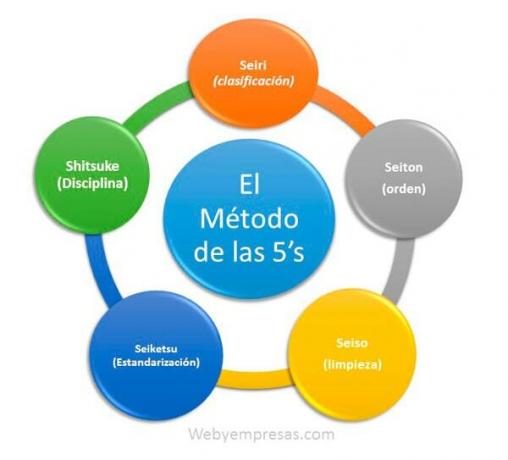An industrial or manufacturing process is a multi-step process involving the conversion of raw materials into finished products using machinery. There are different types of industrial processes of which manufacturing companies, of course, operate by taking raw materials and turning them into products.
Humans have been using tools to turn raw materials into finished products for thousands of years. That said, modern manufacturing didn't emerge until the Industrial Revolution. At the end of the 18th century, companies began to use machines to manufacture large volumes of products, ushering in a new era for manufacturing.
Advertisements

In this article you will find:
Definition
An industrial process is defined as the use of naturally occurring equipment, devices or reactions to convert raw materials or parts into finished products on a consistent and repetitive basis. Likewise, these processes must have established standards such as quality measures, tolerances and performance metrics to maintain all areas production, including machine operation, labor, material flow, and others, coordinated to achieve consistency and efficiency.
Advertisements
The process chosen is often determined by the type of product being made, as some may require a simple system while others require complicated intermediate steps such as mixing or to combine. But it is possible to see different manufacturing processes used in different companies or even combined in the same manufacturing company.
Classification
Industrial processes are classified in various ways. In five types which are the following processes:
Advertisements
- Repetitive
- Discreet
- Workshops.
- Continuous
- Lots
However, this appears to be a combination of different classifications. There are several different ways of approaching the classification of types of industrial processes:
- By production scale: workshop (individual), batch (serial) and mass production.
- Due to the nature of the product: discrete manufacturing or by process.
- By the role of the process: basic, auxiliary, at the service, managerial
- By the level of automation: manual, machine-manual, machine, automated, complex (fully) automated.
As you can see, we have already determined four ways to categorize the types of manufacturing processes. However, these categories consist of several types
Advertisements
Types of industrial processes
The different types of manufacturing processes fall into one of five categories:
Repetitive
Repetitive manufacturing is the family production line. Since the days of Henry Ford and his moving assembly line, repetitive assembly lines have been the cornerstone of large-scale manufacturing around the world. These assembly lines are based on consistent and repeatable production methods that maintain an established production rate over time.
Advertisements
The configuration requirements for such production lines are usually minimal, with little change throughout their operation. As such, repetitive production is used to produce large series of products that have little variation in design, such as electronics, vehicles, or clothing. The speeds of these lines can be adjusted up or down to accommodate changes in product demand, making this a good all-purpose methodology.
Discreet
Similar to repetitive manufacturing, discrete manufacturing relies on the assembly line method, but with several key distinctions.
Discreet manufacturing can be thought of as the 'flexible' version of repetitive manufacturing. While repetitive manufacturing is ideal for making a certain range of products that have a unique design Similarly, discrete manufacturing involves frequent changeovers and a more diverse range of production.
It offers the efficiency of a traditional assembly line, but with a greater variety of products that can be produced. They are not as material specific as repetitive production lines, but they tend to work with multiple products at once, which means that operators must balance how often they disassemble each setup as quickly as each run occurs to optimize production efficiency in the long run term.
Workshop
Unlike the two methodologies, job shops do not typically use production lines or a lot of automation. Instead, they have production areas for specific projects and are generally labor-based.
The workshops offer a custom manufacturing process that ideal for high-quality, low-volume jobs. Most companies that run workshops have limited capacity in what can produce, a natural result of manual processes and production assets limited. And depending on the project, this might be a preferable approach.
Products manufactured through this method tend to be highly specialized and require only a few iterations or maybe a little batch run. As such, quality over quantity is the name of the game with job shops. If the demand for a particular product grows to an unsustainable level it is possible that some of the these manual workflows need to be replaced by assembly components automated.
Continuous process)
The continuous process manufacturing method is similar to the boilerplate method in that it uses large assembly lines running around the clock. The key difference is in the output of the product. In most cases, the finished product here will be a type of liquid, gaseous, suspended or powdered material.
Like the repetitive process, the continuous manufacturing process is meant to run 24/7 to produce consistent production.
Process (batch)
Our final method is batch processing. This is comparable to a job shop or a discrete manufacturing method, since the production handled in smaller batches rather than a continuous process 24 hours a day, 7 days a week. Product executions are handled on a case-by-case basis, with teams producing multiple products over time as needed.
As the name suggests, these tend to be done in larger and more complicated batches than a typical job shop, but the methodology is adaptable to meet a wide range of needs.


